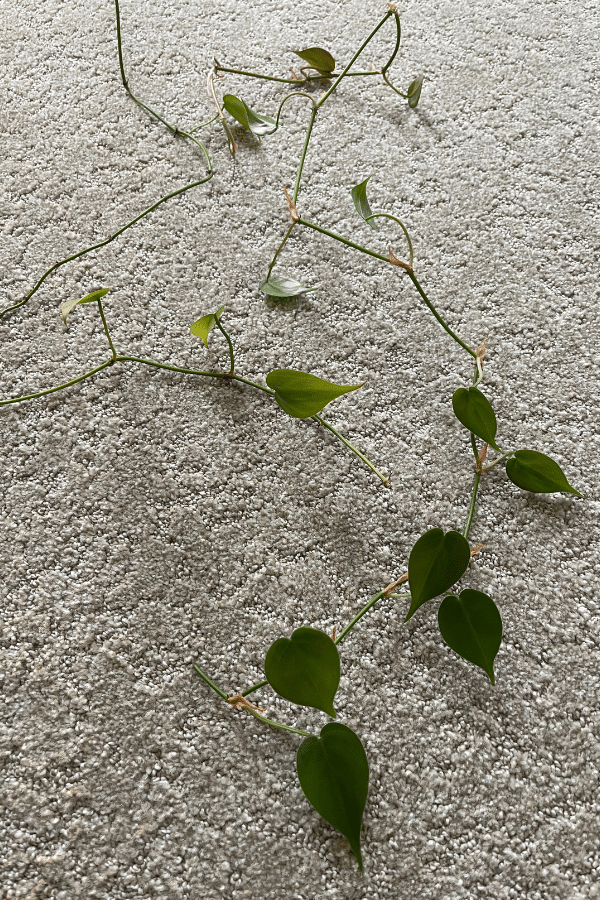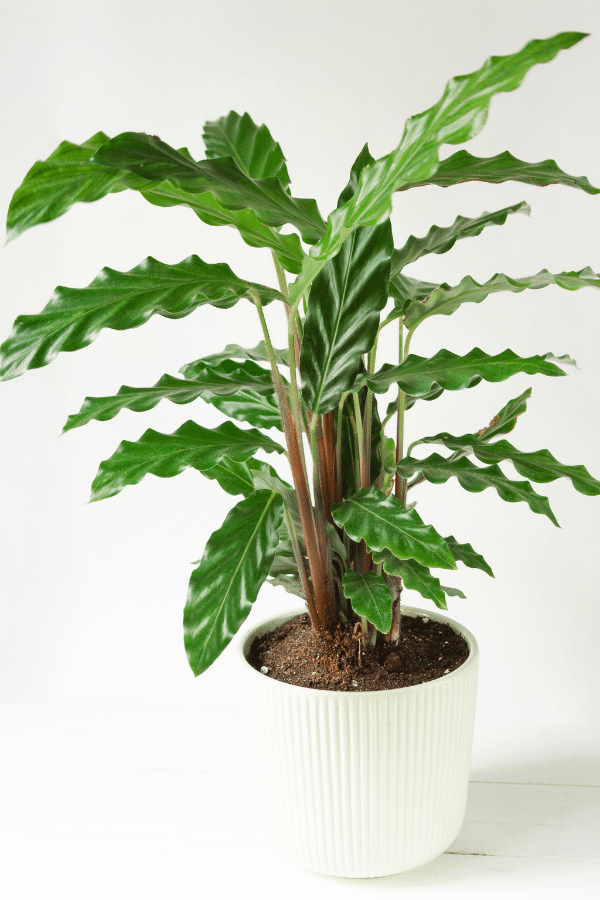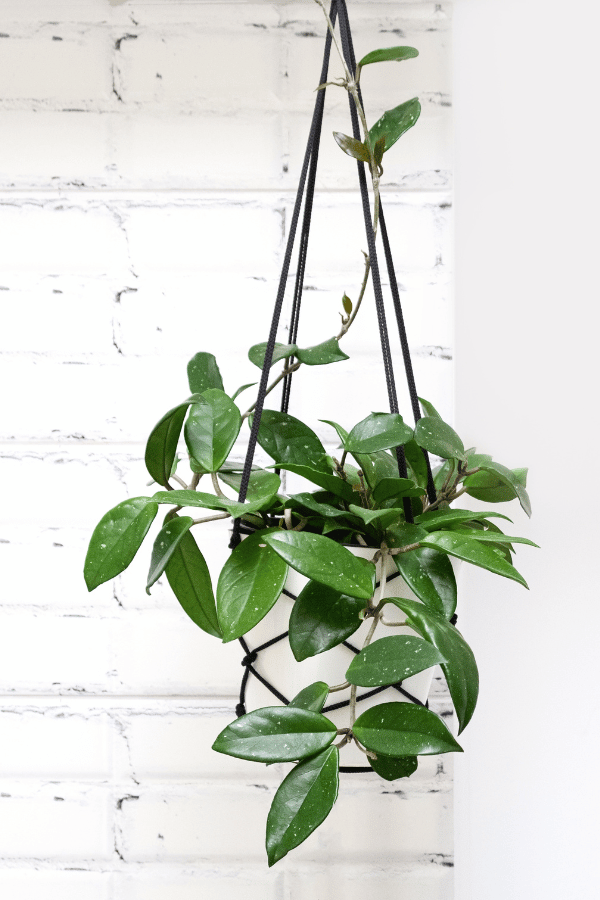Lemon Lime Philodendron
Scientific Name: Lemon Lime Philodendron
Common Name: Lemon Lime Philodendron
Lemon Lime Philodendron care is easy to grow and care for and a perfect plant for smaller spaces. If you want a houseplant that is great for beginning plant parents, a Lemon Lime Philodendron plant may be for you.
To give this Philodendron plant the best care, it requires airy well-draining soil, allow the top half of soil to dry out before watering, provide the plant with bright indirect sunlight, temperatures ranging from 65-80F, and average household humidity levels.
Quick Care Overview
| Common Name | Lemon Lime Philodendron |
| Scientific Name | Lemon Lime Philodendron |
| Family | Araceae |
| Origin | Americas |
| Growth Rate | Fast |
| Identification | Heart-shaped leaves that are yellow and lime green |
| Height | Up to 24 inches tall |
| Soil | Well-draining airy soil |
| Water | Allow top half of soil to dry out before watering |
| Temperature | 65-80F |
| Sunlight | Bright indirect sunlight |
| Toxic to Cats & Dogs | Yes |
| Toxic to Humans | Yes |
| Pests | Mealybugs, thrips, spider mites |
| Diseases | Root rot |
Below we will dive deep into this Lemon Lime Philodendron care guide.
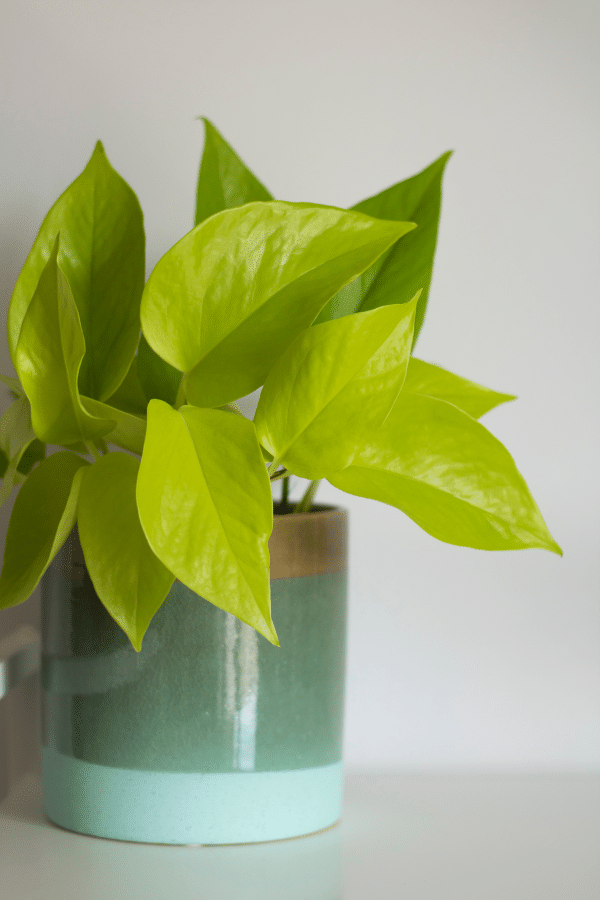
Lemon Lime Philodendron History
Philodendron Lemon Lime is a beautiful, bright trailing tropical plant that brings a burst of vibrance to every room. Native to the Americas, this fast-growing plant has air purifying properties and is easy to care for. This plant was discovered in 1832 by Schott Institute, where it was then transported to England and became very popular there.
Lemon Lime Philodendron Identification
The Lemon Lime Philodendron is a trailing Philodendron with heart-shaped leaves that present in bright hues of yellow and lime green.
Lemon Lime Philodendron Growth Facts
Due to its trailing habit, the Lemon Lime Philodendron will take well to being grown in a hanging basket or placed where it will be allowed to climb.
How Big Does a Lemon Lime Philodendron Get?
This plant may grow up to 24 inches.
Lemon Lime Philodendron Care
This quick-growing Philodendron is extremely easy to care for, making it perfect for beginners.
Lemon Lime Philodendron Soil
Philodendron Lemon Lime prefers to be grown in a well-draining airy soil for aroids, such as peat moss. As this plant is not picky, it will grow fine in planted in a commercial potting soil.
Lemon Lime Philodendron Fertilizer
Your Lemon Lime Philodendron will appreciate being fed by a balanced liquid fertilizer during the growing months of spring and summer. Ensure that you follow all label instructions and do not fertilize during winter. A balanced feeding will provide your Philodendron will the nutrients it needs for significant leafy growth.
Lemon Lime Philodendron Watering
The Lemon Lime Philodendron likes to be kept consistently moist, but not oversaturated. Do not let your plant sit in excess water within its drainage tray, as this may lead to serious issues. You should rewater your plant when about half of its soil has dried.
Lemon Lime Philodendron Light Requirements
Your Lemon Lime Philodendron should be grown in bright, indirect sunlight. Although this plant will survive in low light conditions, it will grow best in bright, indirect light such as from an eastern or western-facing window. Keep in mind that too much direct sunlight will cause this plant to scorch.
Lemon Lime Philodendron Temperature & Humidity
Being a tropical plant, your Philodendron will thrive if kept in warm temperatures, between 65 to 80 degrees Fahrenheit. You should not expose your Philodendron to temperatures above 85 degrees Fahrenheit or below 60 degrees Fahrenheit. The Lemon Lime Philodendron will tolerate average household humidity, around 40%, but will grow more rapidly when kept in higher humidity levels. You may increase the humidity levels in your home by installing a humidifier, misting your plant, grouping it together with other tropical plants to create a microclimate, or installing a pebble tray.
Repotting Lemon Lime Philodendron
Being a fast grower, your Lemon Lime Philodendron will likely need to be repotted every 1-2 years, or whenever its roots are seen poking through its drainage holes. Select a container that is 1-2 inches larger than the previous container with drainage holes. Repotting should be done in spring. Repot your plant, refresh the soil, tamp lightly, water thoroughly, and place in indirect light.
Lemon Lime Philodendron Maintenance & Pruning
You should prune your Philodendron periodically to maintain its growth. Additionally, you should remove any dead, discolored, or disease leaves periodically using clean, sharp shears.
Lemon Lime Philodendron Propagation
Propagation of the Lemon Lime Philodendron is straightforward and may be done easily through stem cuttings. To propagate, simply take cuttings of the stem between two leaves (ensuring that there are at least two leaf nodes on each section), dip the cut end into a rooting hormone, and plant into the soil, water thoroughly, and place it into indirect light.
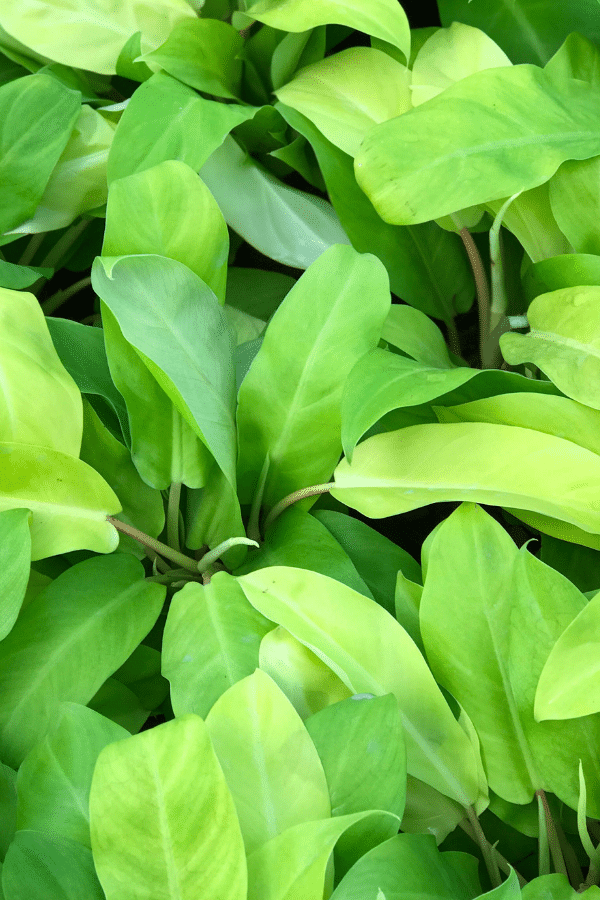
Lemon Lime Philodendron Toxicity
Lemon Lime Philodendron plants are toxic to humans, cats, and dogs since they contain calcium oxalate crystals. Wash hands after handling the plant.
Toxicity to Humans
The Lemon Lime Philodendron is toxic to humans and should not be ingested. This plant should be kept out of reach from young children and babies. Ingestion may cause difficulty breathing, swelling, and other digestion issues.
Toxicity to Cats & Dogs
The Lemon Lime Philodendron is considered toxic to pets and should never be ingested. However, if you suspect that your pet has consumed any portion of this plant, contact your veterinarian or animal poison control immediately.
Lemon Lime Philodendron Problems
Lemon Lime Philodendron Leaves Turning Yellow
If leaves of your Philodendron turn yellow, it is often indicative that the plant is either receiving too much light or not enough light. Alternatively, leaves may be turning yellow due to overwatering or nutrient deficiency.
Lemon Lime Philodendron Leaves Turning Brown
If the foliage of your Lemon Lime Philodendron turns brown, it is often indicative of overwatering or plant disease. Ensure that you are not overwatering your plant.
Lemon Lime Philodendron Diseases
Like many other tropical indoor houseplants, the Lemon Lime Philodendron may become susceptible to plant diseases and issues related to overwatering. Ensure that you do not overwater your Lemon Lime Philodendron and that you do not allow it to sit in excess standing water found within the plant’s drainage tray.
Lemon Lime Philodendron Pests
The Lemon Lime Philodendron may become susceptible to infestation from common indoor houseplants such as spider mites, mealybugs, or thrips. Upon identifying an infestation, isolate your plant and treat it with neem oil or insecticidal soap. Ensure that you follow all label instructions.

